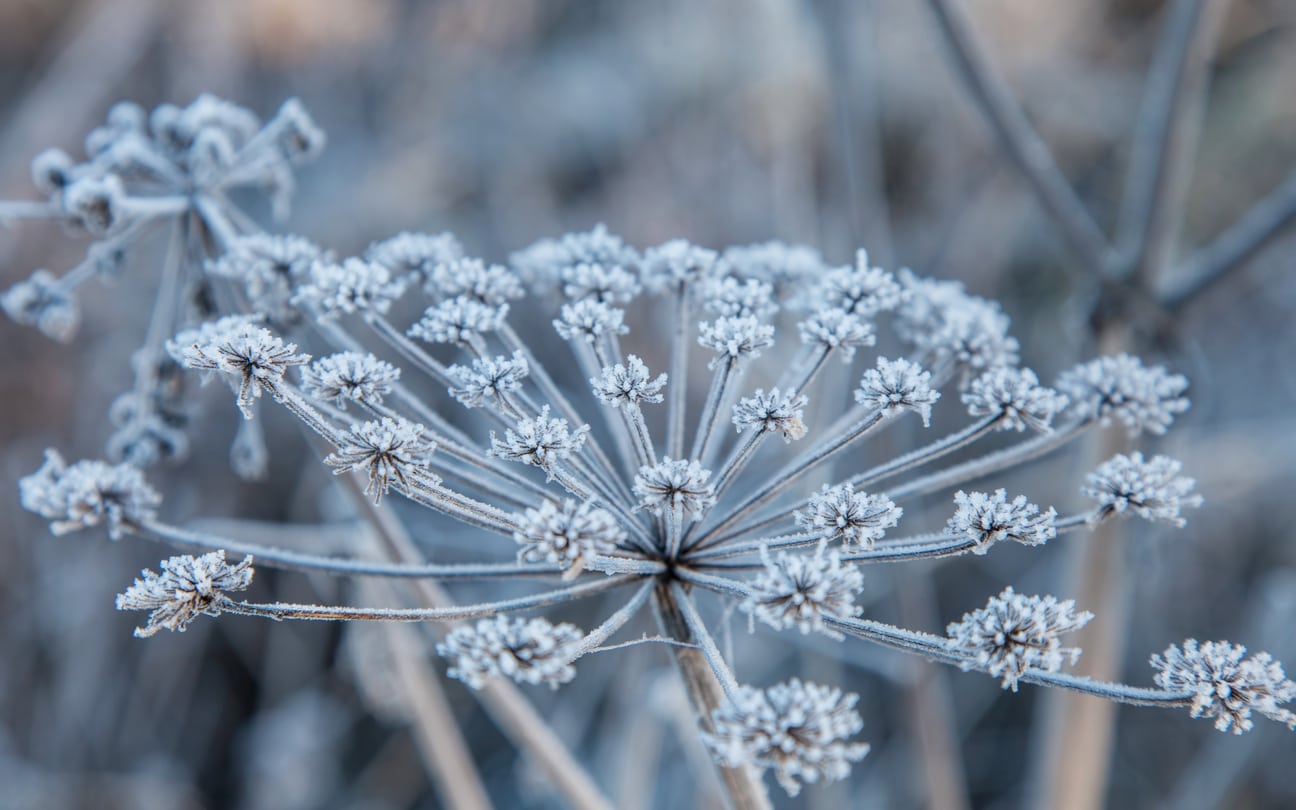Caraway Winter Care – Caraway Cold Hardiness In The Garden


Caraway is a spice that many cooks like to keep in the herb garden. Although you can buy annual plants, most garden caraway are biennials, seeding the second year. That means that the plant requires caraway winter care. Keeping caraway in winter isn’t a problem in mild regions, but in chillier areas, caraway winter protection is a must. Read on to learn about caraway winter planting, caraway cold hardiness, and how to make sure your plants make it to spring.
Keeping Caraway in Winter
If you use caraway seeds in cooking, you may know that caraway (Carum carvi) is a biennial herb. Caraway "seeds" are the dried fruit of this plant that have small seeds on the outside like strawberries do. Caraway winter planting is possible since some seeds can germinate at 40 degrees Fahrenheit (4 C.). However, they germinate best at temperatures closer to 70 degrees F. (21 C.) and are more frequently planted in spring or fall. The first year, caraway grows into small, bushy plants with shiny green leaves. Come autumn, the plants die back to the roots. With good caraway winter care, the herbs make it to spring. The second growing season, the plants grow to twice the size they attained the first year. You can use the leaves in salads whenever they are large enough. At the end of the second season, the plants flower and fruit. The caraway seeds used in cooking are attached to the outside of the fruit. Caraway cold hardiness is exceptional. The plants thrive in U.S. Department of Agriculture plant hardiness zones 3 through 7. That means that this biennial herb tolerates very low temperatures. The plants can even survive winters when the weather dips down to -40 degrees Fahrenheit (-40 C.).
Caraway Winter Care
Since caraway plants die back in autumn to the roots, keeping caraway in winter is not exceptionally difficult. You must protect the roots, but you don’t have to worry about tender stems and leaves. Healthy caraway roots have an easier time making it through winter. The health of the plant impacts the health of the roots, so be sure to provide the plant with everything it needs to thrive. Plant the caraway in a full sun location in well-draining soil. Adding aged compost before planting gets the seedling the nutrients it requires to grow into a healthy plant. Keep the soil moist while the plant is establishing itself and building its root system. Provide more compost at mid-season. Caraway winter care involves protecting the roots from icy weather. One of the best ways to protect them from the cold is to layer mulch over the plant roots. This insulates the caraway like a thick blanket. You can remove this mulch in spring once new growth begins.
Sign up for the Gardening Know How newsletter today and receive a free copy of our e-book "How to Grow Delicious Tomatoes".

Teo Spengler is a master gardener and a docent at the San Francisco Botanical Garden, where she hosts public tours. She has studied horticulture and written about nature, trees, plants, and gardening for more than two decades, following a career as an attorney and legal writer. Her extended family includes some 30 houseplants and hundreds of outdoor plants, including 250 trees, which are her main passion. Spengler currently splits her life between San Francisco and the French Basque Country, though she was raised in Alaska, giving her experience of gardening in a range of climates.